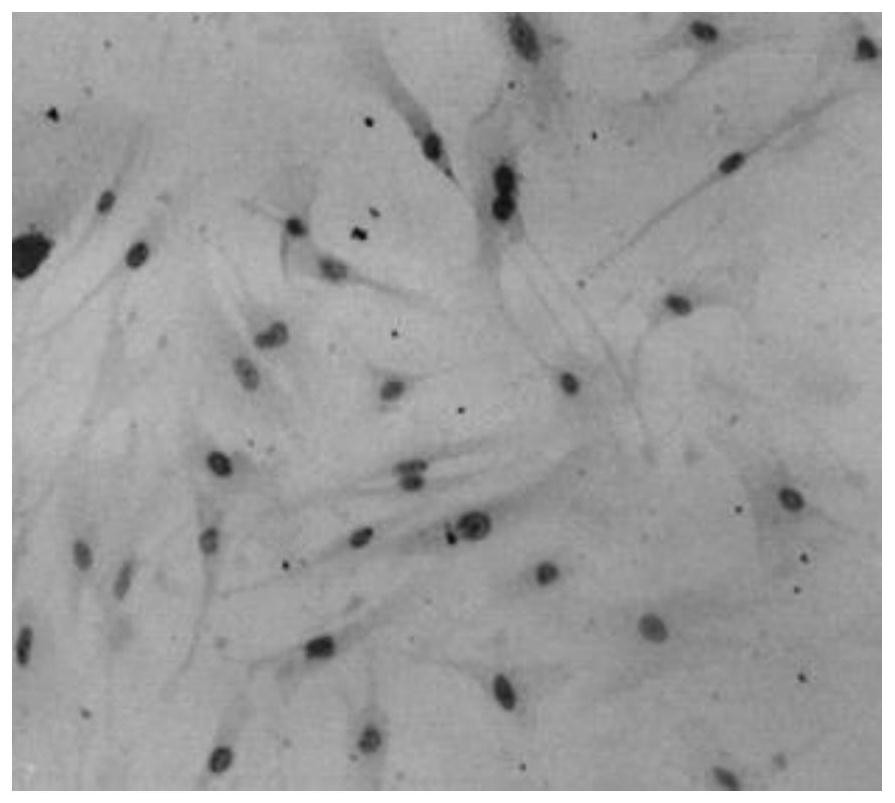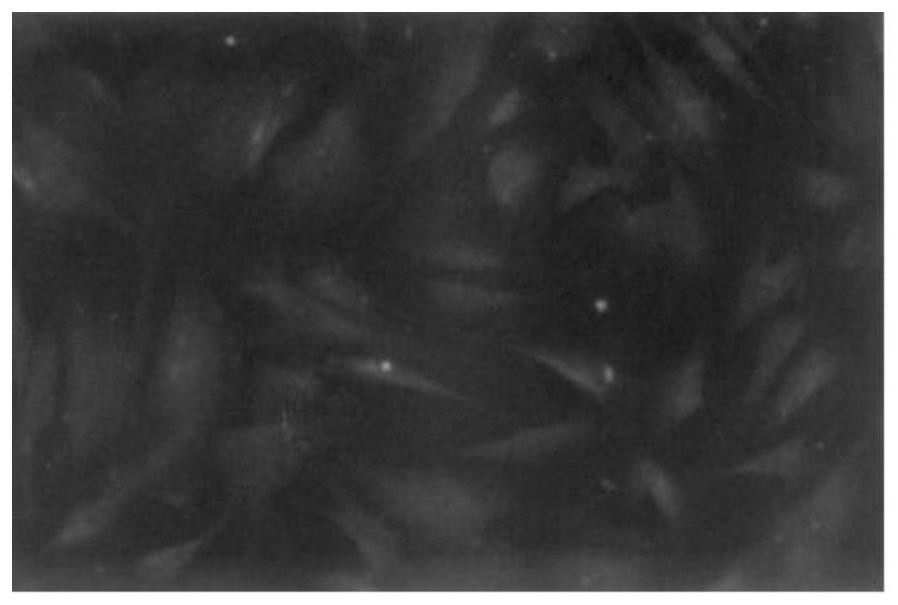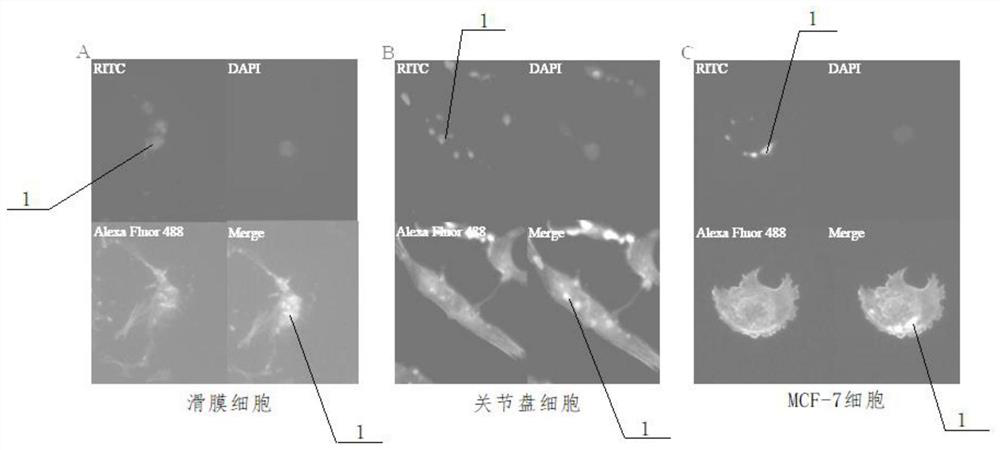The application of nano-synthetase to promote the synthesis of high-molecular hyaluronic acid in cells
A technology of polymer transparency and hyaluronic acid, which is applied in the application field of nano-synthetic enzymes to promote the synthesis of polymer hyaluronic acid in cells, can solve the problems of difficult animal tissue source, poor biocompatibility and low yield, etc. Good development and application prospects, reducing anxiety, and improving the effect of HA content
- Summary
- Abstract
- Description
- Claims
- Application Information
AI Technical Summary
Problems solved by technology
Method used
Image
Examples
Embodiment 1
[0031] 1. Isolation, culture and identification of synoviocytes
[0032] 1. Take the synovial tissue from one side of the articular disc of a human or animal, and culture it by the tissue block method.
[0033] 2. Synoviocytes were typed by single cell cloning method.
[0034] (1) Single cell cloning
[0035] Collect the adaptive medium and cultivate the synoviocytes to a semi-confluent state, suck out all the culture medium and centrifuge, filter through a filter with a diameter of 0.22 μm, and take a bottle of cells in the logarithmic growth phase for routine digestion, centrifugation, and counting. Dilute the cells to 45-50 cells per 100 μL, mix well, and plant. Observe the 96-well plate under an inverted microscope, record the serial number of only a single cell, then add 150-200 μL of culture solution to only a single cell well, and place in CO 2 Incubator cultivation. Observation was performed after culturing for 86-96 hours. Select well-grown single-cell clone well...
Embodiment 2
[0040] Example 2 To study the efficiency of RITC-labeled polyethyleneimine surface-modified mesoporous silicon nanoparticles into synovial fibroblasts in vitro
[0041] 1. Preparation of mesoporous silicon nanoparticles modified on the surface of polyethyleneimine, and labeled with RITC fluorescence:
[0042](1) Disperse the synthesized porous nanoparticles (10-100 mg) into 10-200 ml of water, adjust the pH to about 10, and then add 0.1 ml to 5 ml of 3-(trihydroxysilyl) propane Add 3-(Trihydroxysilyl)propylmethylphosphonate to the solution, stir at 40°C for 4 hours, and obtain nanoparticles by centrifugation (3700 rpm for ten minutes); then the solid particles are resuspended in 50- 500 mg of polyethyleneimine (Polyethyleneimine, PEI, molecular weight 5000-50000 Da) solution, stirred at room temperature for 4 hours. As for the centrifugation in the high-speed centrifuge at 20,000 rpm for ten minutes, the mesoporous silicon nanoparticles modified on the surface of polyethylene...
Embodiment 3
[0051] Example 3 Establishment of nanoparticle-hyaluronan synthase loading system
[0052] 1. Preparation of a mesoporous silicon nanoparticle-hyaluronic acid synthase loading system, specifically including the following steps:
[0053] (1) Take 10ug of hyaluronic acid synthase, add PBS to dissolve and expand the volume to 100ul to obtain a 100ug / ml hyaluronic acid synthase solution;
[0054] (2) Mix 10uL of 100ug / ml hyaluronic acid synthase solution with 10uL of 100ug / ml RITC-labeled polyethyleneimine surface-modified mesoporous silicon nanoparticles DMEM solution, shake gently for 24h, and then centrifuge, Collect the supernatant and pellet after centrifugation.
[0055] Calculate the drug loading of the nanoparticle-hyaluronan synthase loading system, drug loading (%)=(input amount of hyaluronan synthase (ug)-hyaluronan synthase content in the supernatant (ug)) / mass of nanoparticles × 100%;
[0056] Detect the release amount of hyaluronic acid synthase, and draw the re...
PUM
| Property | Measurement | Unit |
|---|---|---|
| particle diameter | aaaaa | aaaaa |
| pore size | aaaaa | aaaaa |
| molecular weight | aaaaa | aaaaa |
Abstract
Description
Claims
Application Information
 Login to View More
Login to View More - R&D
- Intellectual Property
- Life Sciences
- Materials
- Tech Scout
- Unparalleled Data Quality
- Higher Quality Content
- 60% Fewer Hallucinations
Browse by: Latest US Patents, China's latest patents, Technical Efficacy Thesaurus, Application Domain, Technology Topic, Popular Technical Reports.
© 2025 PatSnap. All rights reserved.Legal|Privacy policy|Modern Slavery Act Transparency Statement|Sitemap|About US| Contact US: help@patsnap.com



